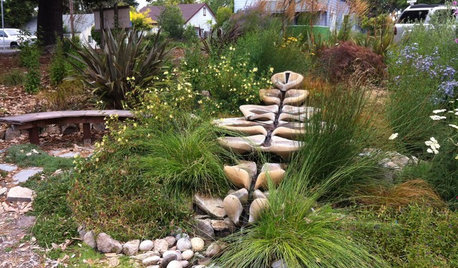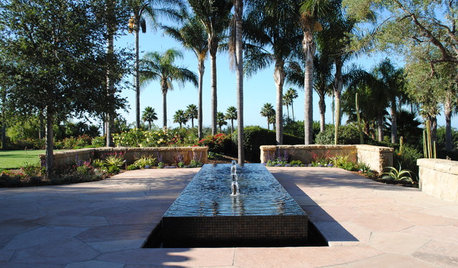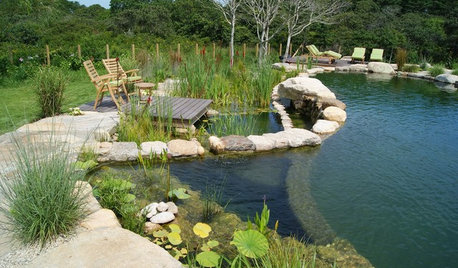Water Clear But Algae Still Forms
skiwindham
14 years ago
Related Stories

LANDSCAPE DESIGNSmall Garden? You Can Still Do Bamboo
Forget luck. Having bamboo that thrives on a wee plot just takes planning, picking the right variety, and keeping runners in check
Full Story
GREEN BUILDINGLet’s Clear Up Some Confusion About Solar Panels
Different panel types do different things. If you want solar energy for your home, get the basics here first
Full Story
DECLUTTERINGYour Clutter-Clearing Plan for the New Year
Tackle these tasks month by month for a decluttering strategy that will really pay off
Full Story
HEALTHY HOMEA Guide to Indoor Air Purifiers
Get the lowdown on air filtration systems for your house and the important ratings to look out for
Full Story
RUSTIC STYLEHouzz Tour: Salvaged Parts Form a New-Old Texas Hideaway
Reclaimed timbers and metal give an Austin-area prefab bygone soul
Full Story
SAVING WATERXeriscape Gardens: How to Get a Beautiful Landscape With Less Water
Conserve water and make gardening much easier with the xeriscape approach’s 7 principles
Full Story
LANDSCAPE DESIGNNew Ways to Design With Water
Go beyond 3-tiered fountains and faux waterfalls to discover water's architectural possibilities
Full Story
GARDENING AND LANDSCAPINGGardens Tap Into Rill Water Features
Rooted in ancient design, this water feature is popular again as a way to help contemporary landscapes flow
Full Story
LANDSCAPE DESIGNGet Along With Less Lawn — Ideas to Save Water and Effort
Ditch the mower and lower your water bill while creating a feast for the eyes with diverse plantings and gathering places
Full Story
LANDSCAPE DESIGNSecrets of a Successful Water Garden
Relax. Having a water garden is much easier once you understand the basics
Full StoryMore Discussions







annedickinson
garden_mama_66
Related Professionals
Brentwood Landscape Architects & Landscape Designers · Essex Landscape Architects & Landscape Designers · Fort Lee Landscape Architects & Landscape Designers · Aurora Landscape Contractors · College Park Landscape Contractors · Farmington Landscape Contractors · Firestone Landscape Contractors · Lady Lake Landscape Contractors · Lancaster Landscape Contractors · Melrose Landscape Contractors · National City Landscape Contractors · St. Louis Landscape Contractors · University City Landscape Contractors · West Covina Landscape Contractors · West Palm Beach Landscape Contractorsjodi_4
randywest
jodi_4
jennyb5149
jodi_4
horton
tootswisc
jodi_4
david2006